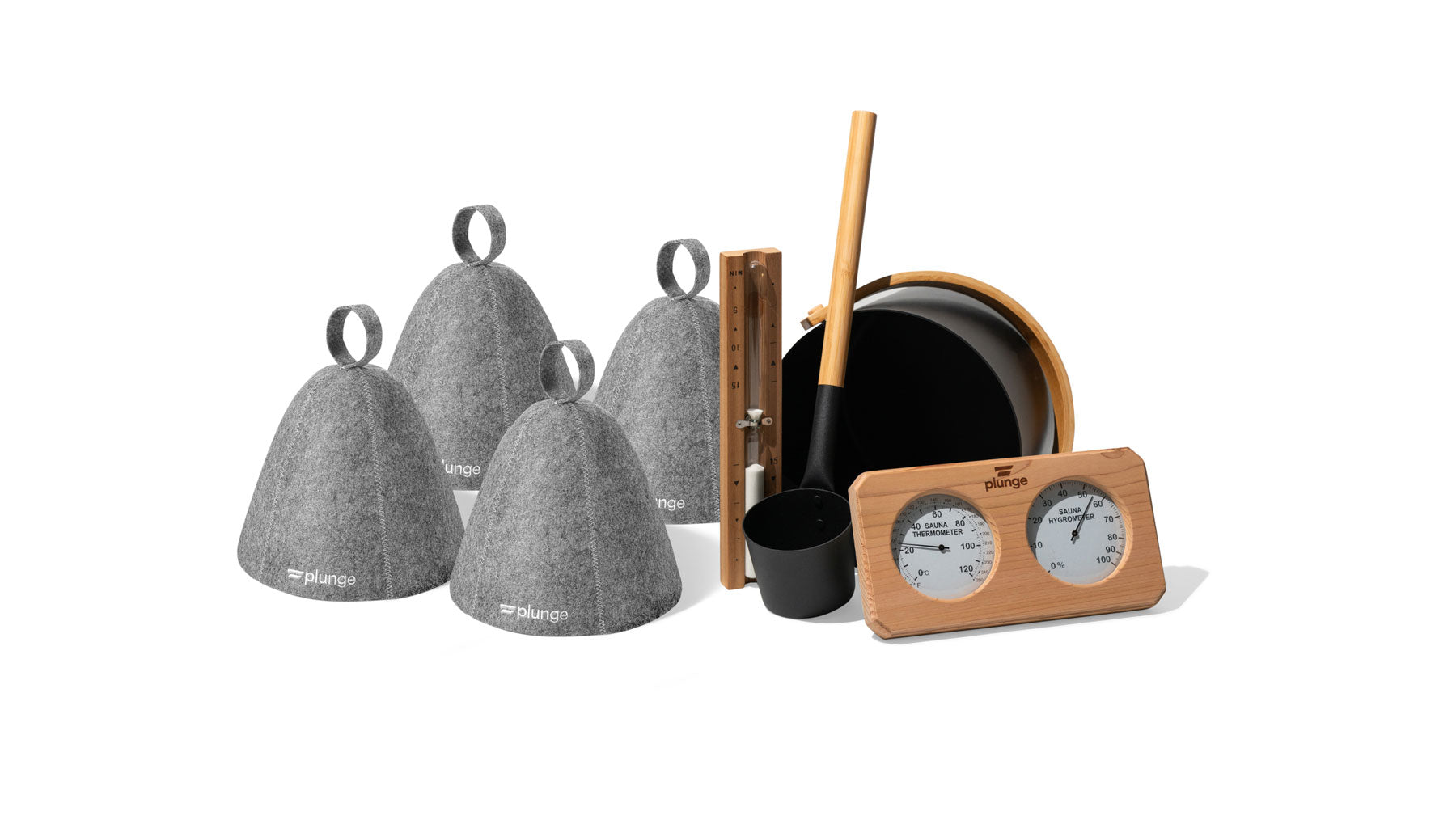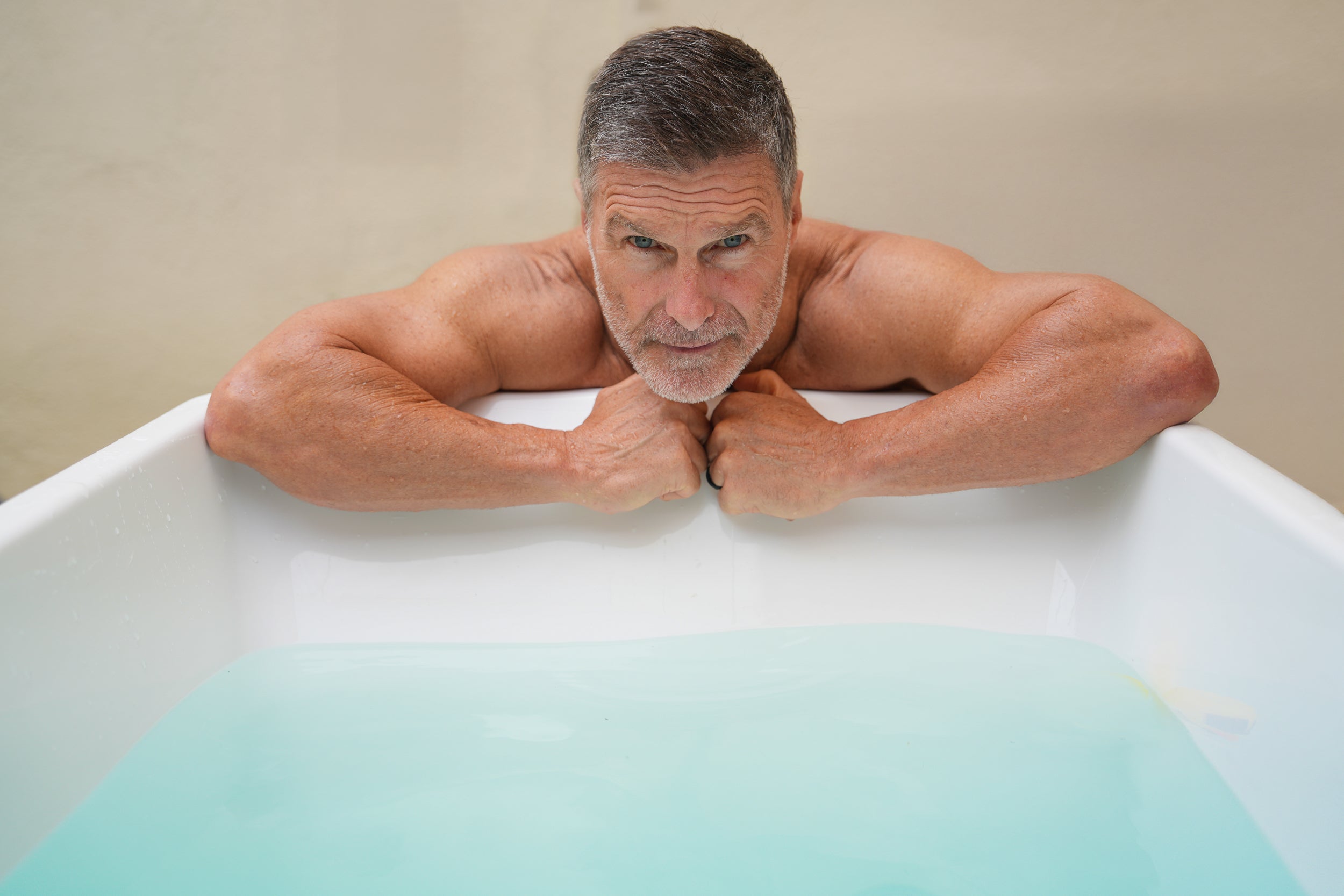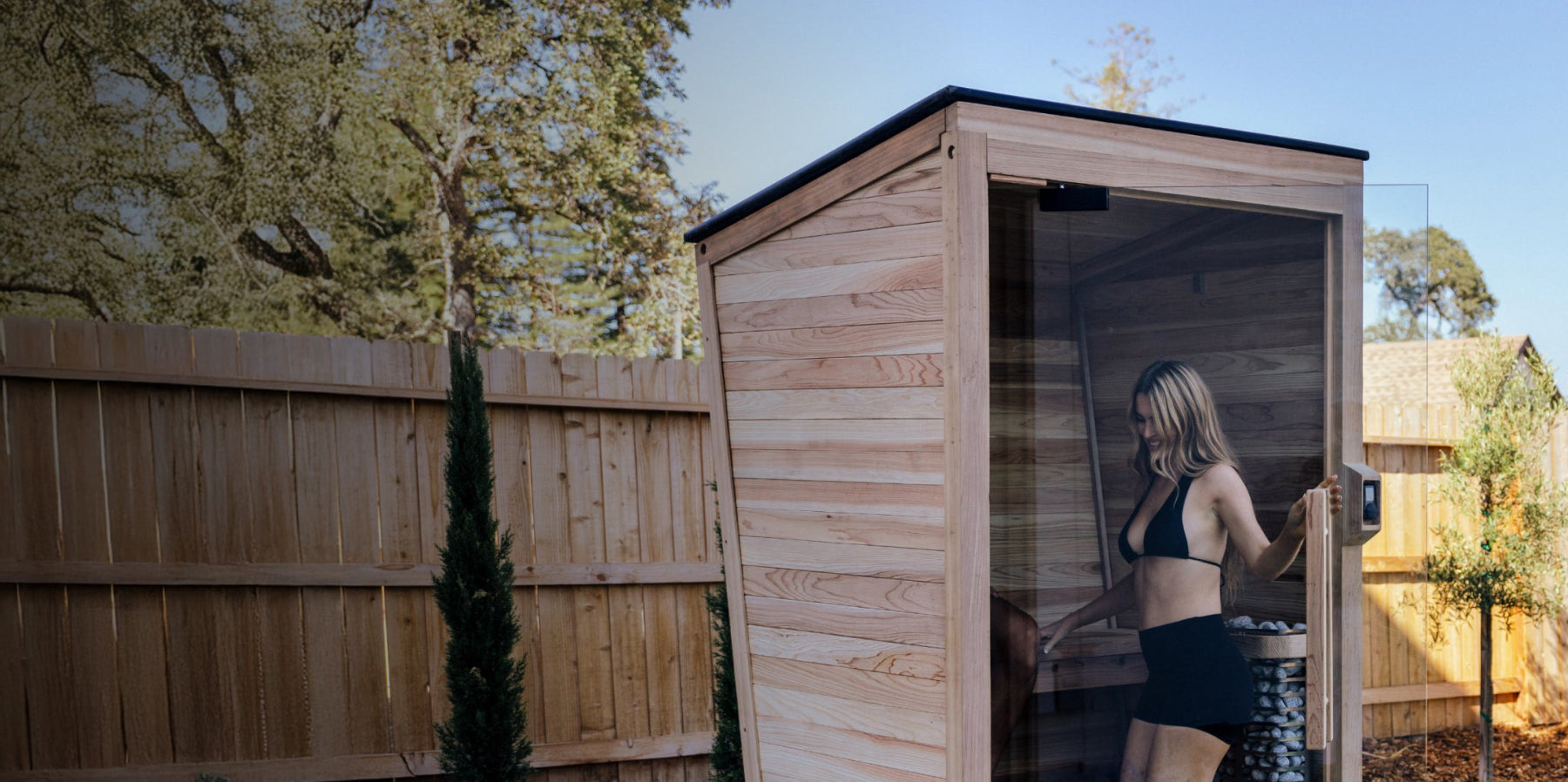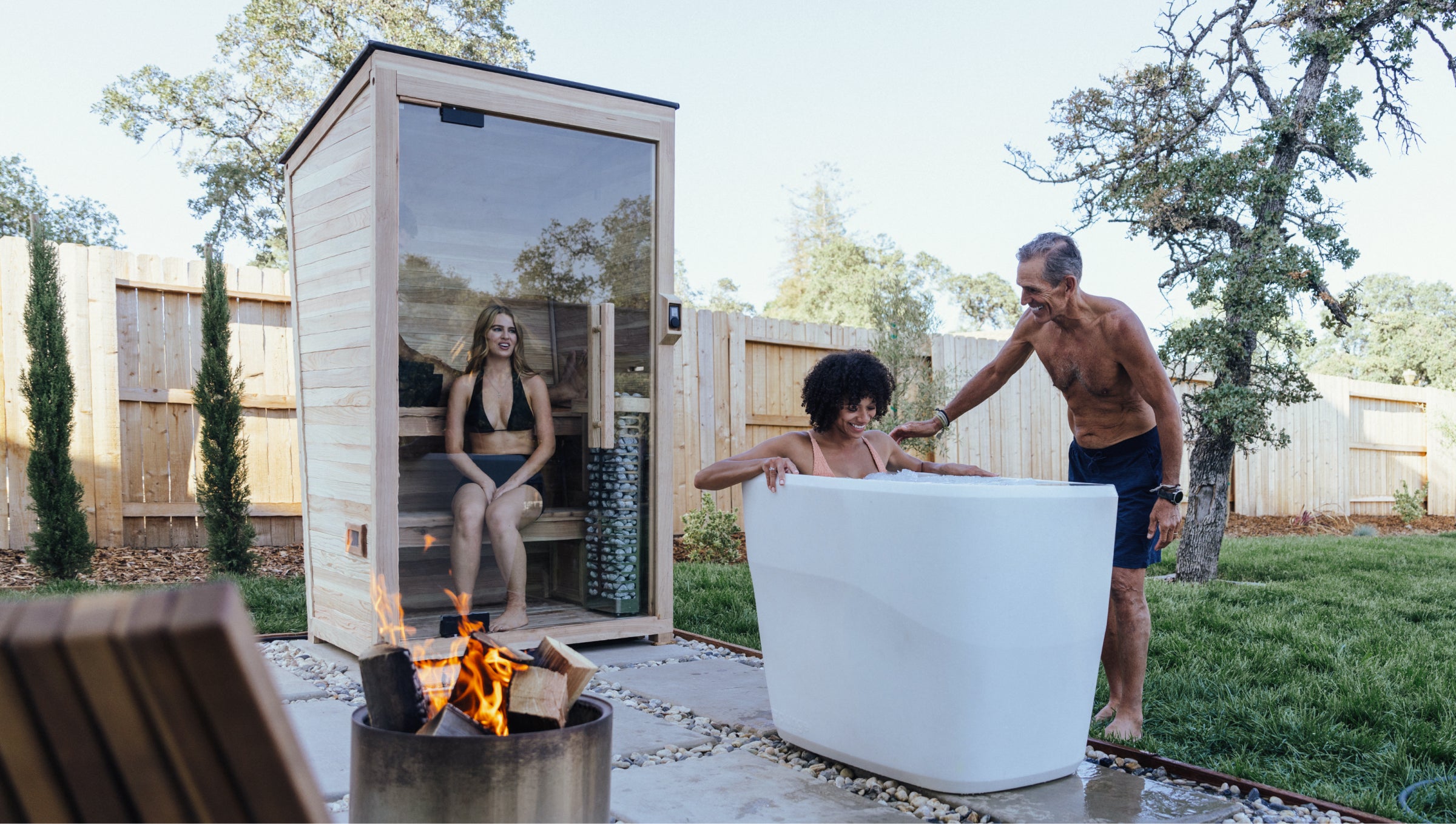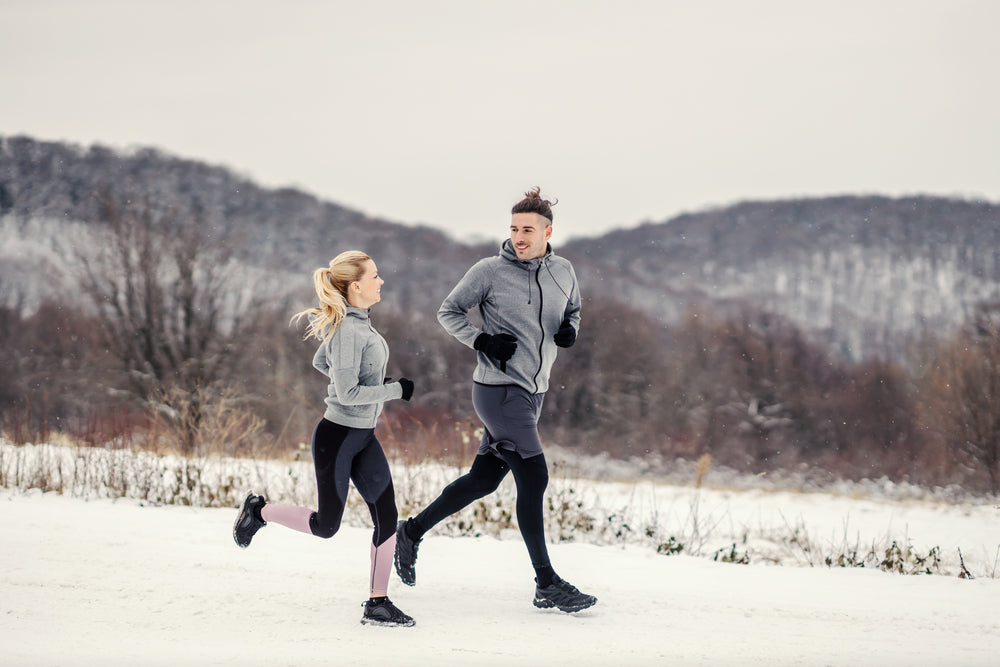
Benefits of Cold Weather Running & Exercise
When the weather gets colder, exercising may seem more daunting than ever. But the truth is, exercising and running in cold weather offers unique benefits for both your physical and mental health. So instead of heading indoors once the temperatures drop, let’s take a look at some reasons why you should get out there and embrace the cold.
How Does Temperature Affect Exercise?
Temperature plays a crucial role in affecting how your body responds to exercise. In cold weather, the body undergoes peripheral vasoconstriction to minimize heat loss, which can increase blood pressure and demand more effort from your cardiovascular system. On the other hand, exercising in hot weather increases the challenge of regulating body temperature. Your body responds by enhancing blood flow to the skin and sweating, which can lead to quicker dehydration and reduced performance. Understanding these physiological changes is essential for optimizing workouts in different climates and temperatures (especially for those who exercise outdoors).
What is the Ideal Training Temperature for Endurance?
Everyone has different comfort levels and preferences when it comes to temperatures for working out. However, studies have shown that the ideal temperature for training to maximize endurance is 50 to 55 degrees Fahrenheit.
Cold Weather Exercise Benefits
While it’s not advised that you work out in a blizzard or sub-zero temperatures, there are a host of health advantages to continuing your exercise routine when it’s cold outside. Benefits of cold weather workouts and runs can include:
Boost Your Immune System
Winter tends to mean cold and flu season, but exercising and running outdoors may help strengthen your immune system. Contrary to popular belief, being cold isn't what makes you sick — but rather colder temperatures tend to put people inside in closer contact with others, resulting in the spread of germs.
Research shows that winter swimmers have a 40% lower incidence of upper respiratory tract diseases and often have increased levels of white blood cells. Scientists also believe that exposure to cold can increase metabolic rates and activate the immune system. So, instead of staying cooped up in a gym, surrounded by people sniffling and coughing, head outside and hit the road or the trails for some fresh air.
Improve Your Mood
Being active outdoors in the winter can also be a major mood booster. Exercise, in general, helps your body release serotonin and endorphins — and exercising in the sunlight can help you release even more feel-good chemicals. For example, outdoor hikers feel more calm, contemplative, and elated than indoor treadmill walkers. You’ll also get a bigger dose of vitamin D, which can help you fight depression symptoms and lower your risk of anxiety and depression in the first place.
Seasonal affective disorder (SAD), a disorder that causes people to have low energy and a loss of interest in daily activities during the winter months, is experienced by millions of people in the US alone. Because your body needs to work even harder in the cold, it produces even more endorphins, which means that cold-weather workouts can be a game-changer if you suffer from depression or a lack of motivation.
Burn More Calories
Running or exercising in cold weather can also help you burn calories and fat. It can turn white fat from your belly and thighs into brown fat (brown adipose tissue), which burns calories to help you stay warm. Your body will need to work harder to regulate your core temperature in colder weather so it burns more calories, raises your metabolism, and potentially boosts weight loss as a byproduct.
Increase Your VO2 Max & Endurance
Running and exercising in cold weather can also increase your VO2 max or maximum oxygen consumption. This is the amount of oxygen you can breathe in and use when working out, and being in shape can improve your VO2 max.
Interestingly, goats exposed to average temperatures below 9°F saw a 34% increase in their VO2 max and could run 29% faster. It’s been shown that humans also experience improved aerobic capacity and performance from regular cold-weather workouts. In addition, you’ll be able to run for longer because cold weather can strengthen your heart, lungs, and circulatory system for better endurance.
Maintain Your Fitness
Instead of only working your muscles, lungs, and heart during the warmer months and quickly experiencing aerobic loss, it’s beneficial to continue working out in the winter to preserve your fitness gains. By having a year-round regimen, you can stay physically active and maintain your fitness all year round! As mentioned above, working out in the winter can actually strengthen your heart because it works harder to pump blood throughout your body.
Try New Activities
Winter is the perfect season to diversify your exercise routine by exploring a range of exciting outdoor activities and meeting new groups. For those who prefer a quieter, nature-focused workout, snowshoeing and winter hiking or trail running provide a great opportunity to explore snowy landscapes, boosting endurance and caloric burn. For the adventurous, cold water swimming can invigorate the senses and enhance the immune system. Embracing these activities can break the monotony of typical workouts and allow you to engage with the winter season in a healthy and enjoyable way.
Running in Cold Weather
Despite the lower temperatures, winter running is not only enjoyable but offers several benefits for those who participate. The paths are typically less crowded, allowing for a more peaceful and focused run. Additionally, the cold weather presents unique challenges, as the body has to work harder to regulate its temperature, which can enhance cardiovascular fitness. This makes winter running a popular choice for those looking to vary their exercise routine while enjoying the outdoors.
Tips For Running In Cold Weather
Winter running requires a bit of extra preparation and mindfulness to stay safe and enjoy the benefits of exercising in the cold. Here are some essential tips for when the temperatures drop:
- Stay hydrated: It’s always a good idea to drink water when exercising, but it’s particularly important when running in winter. Because cold air can lower your thirst, you’re more likely to get dehydrated — so make sure to drink water before, during, and after your workout.
- Choose a safe surface: This one’s pretty self-explanatory, but if you plan on running in the winter, scout your running path beforehand. The last thing you want is to slip on ice and get injured.
- Warm up with dynamic stretches: If your joints and muscles are inactive and cold before you start to exercise, you’re far more likely to injure yourself. Instead of stretching in a fixed position, try dynamic stretches that incorporate motion, such as arm and leg circles, shoulder and neck shrugs, high steps, lunges, and quad pulls. These can boost blood flow and circulation.
- Adjust your pace when needed: Winter conditions can often be unpredictable. Don’t be afraid to change your pace according to the weather conditions when running in winter. If it’s icy or snowy, slow down to prevent falls and injuries. It’s better to have a slower run and be able to head back out the next day than make an excellent time and slip, putting yourself out of commission for a few days or weeks.
- Listen to your body: Pay close attention to how your body feels during winter runs and workouts. Cold weather can exacerbate certain conditions like asthma, so if you feel pain or discomfort, take it as a sign to slow down or take a break.
What to Wear When Running In Winter
As you adjust your workouts for colder conditions, remember to swap out your gear! Shorts and a t-shirt won’t cut it. Instead, you’ll want to wear:
- Gloves, socks, and a hat: Make sure to protect your extremities (head, hands, feet, and ears) when running in the winter. These body parts are particularly vulnerable when it’s cold because your body will prioritize keeping your core warm over these other areas.
- Layers: Try to wear clothing you can quickly take off and put back on when necessary. You’ll probably feel cold at the beginning of your run, warm up in the middle, and then start to feel the chill again once you stop. Wear a thin layer of moisture-wicking material to draw sweat away from your body beneath an insulative layer of fleece or wool.
- Sunscreen: Just because it’s winter doesn’t mean you don’t have to worry about the sun. If you’re surrounded by snow, it’s extra important to wear sunscreen with at least 30 SPF because snow reflects sunlight.
- Good shoes: Make sure to find shoes with excellent traction while winter running to prevent slips. You may also want to look into fast-drying shoes if you are running through snow or slush.
Why Is It Harder To Breathe When Running In Cold Weather?
If you decide to start running in cold weather, it might feel harder to breathe. This is because the cold air can increase irritation and inflammation in your lungs, which constricts airways (further compounded by higher mucus levels). These effects are especially noticeable in people suffering from asthma or COPD.
Other Winter Workout Routines
Want to change up your workout routine and do something new outside? Here are some additional ideas to get you started:
- Swimming: You can swim any time of the year, but swimming in the winter can reduce upper respiratory tract infections and improve your mood and overall well-being.
- Skiing: If you have access to slopes and equipment, skiing is also an excellent winter workout worth considering. Long-distance skiers also have a 60% lower chance of developing anxiety disorders versus non-skiers.
- Biking: Biking in the winter can also be a good option for your winter workout, as it can help you build leg strength and endurance. You’ll also benefit from the fresh air and sunlight. Just make sure you have fat tires designed for increased traction on snow and ice.
- Ice skating: Whether you hit a frozen pond or an indoor rink, ice skating is a fun way to exercise during the winter while improving your balance and lower body strength. It’s a low-impact activity that serves as a good aerobic workout.
- Hiking: Hiking isn’t just for spring, summer, and fall. You can also hit the trails in the winter to get some exercise and take in the snowy vistas.
- Snowshoeing: By strapping on a pair of snowshoes, you can turn a simple hike into a challenging workout. Snowshoeing is perfect for exploring trails and parks, and it offers great aerobic exercise, increasing heart rate and burning calories.
Enhance Your Cold Therapy
Incorporating cold weather workouts not only varies your fitness routine and pushes your body even further, but it also sets the stage for exploring the benefits of cold therapy.
Although hopping into cold water might not seem appealing at first, cold water immersion can significantly enhance your health any time of year — and you can do it from the comfort of your own home. Not only can ice baths reduce inflammation and muscle soreness, but they can also boost circulation.
At Plunge, we understand that everyone’s needs are different, which is why we offer a diverse lineup of cold plunge tubs to suit every preference. From durable inflatables or pop-up ice bath options to classic Plunge tubs, there’s a perfect match for every user. Our tubs are not only high-quality but are easy to set up and maintain so that you can start your cold therapy journey with minimal fuss. Even better, our products are eligible for financing, HSA, and FSA, making your purchase even more accessible.
Medical Disclaimer: The information contained in this post is for informational and educational purposes only. It is not intended to provide medical advice or to take the place of such advice or treatment from a personal physician. All readers/viewers of this content are advised to consult their doctors or qualified health professionals regarding specific health questions or before embarking on any new health or wellness routine, including saunas and cold plunging. Neither the author(s) nor the publisher of this content take responsibility for possible health consequences of any person or persons reading or following the information in this educational content. All viewers of this content, especially those taking prescription or over-the-counter medications, should consult their physicians before beginning any cold plunging routine or other health or wellness program.







